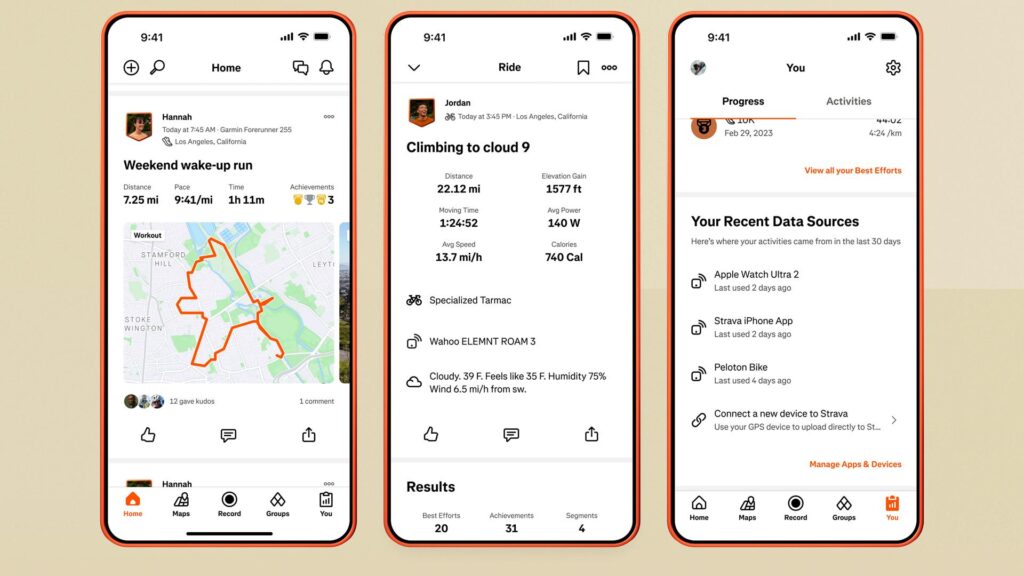Strava Reinstates Garmin Attribution Following Legal Resolution
In a significant development for fitness enthusiasts and athletes around the globe, Strava has announced the reintroduction of Garmin attribution to its activity-sharing platform after recently dropping its legal action against the device manufacturer. The decision marks a pivotal moment for both companies and their respective user bases, as Strava, a prominent social network for athletes, seeks to enhance user experience while fostering collaboration within the fitness technology landscape. This move comes on the heels of a tumultuous period characterized by legal disputes and concerns over data sharing, underscoring the complexities of the tech industry as it navigates the interplay between competition and cooperation. As both companies pivot towards a more unified approach, users can look forward to a richer, more integrated experience in tracking and sharing their fitness journeys.
Strava’s Strategic Shift: Embracing Garmin Attribution to Enhance User Experience
In a significant turn of events, Strava has officially decided to integrate Garmin attribution into its platform following the cessation of legal proceedings. This strategic pivot illustrates Strava’s commitment to enhancing the overall user experience by fostering collaboration over contention. Users can now enjoy seamless syncing of their Garmin device metrics into their Strava activities, allowing for a more cohesive fitness tracking experience. The partnership not only emphasizes Strava’s willingness to innovate but also strengthens its position in a competitive market where user satisfaction is paramount.
The inclusion of Garmin attribution carries several advantages that enhance the functionality and appeal of Strava’s platform. Among the key benefits are:
- Enhanced Data Accuracy: Users can expect more precise activity metrics through direct integration.
- Improved User Interface: The updated design allows for easy viewing of Garmin stats within Strava.
- Broader Device Compatibility: This shift supports a wider array of Garmin devices, catering to various fitness enthusiasts.
- Community Engagement: Users can now share Garmin-based achievements more effectively.
This move is anticipated to not only retain existing users but also attract new members who utilize Garmin devices in their fitness regimens, ultimately advancing Strava’s mission to connect its users with a broader athletic community.
Legal Reversal: Implications for Competition and Collaboration in Fitness Tracking
The recent decision by Strava to include Garmin attribution in its activity tracking signals a notable shift in the competitive dynamics of the fitness tracking industry. With the legal action now behind them, both companies have the opportunity to redefine their relationship, emphasizing collaboration over competition. This newfound partnership could lead to enhanced user experiences by integrating Garmin’s robust data capabilities with Strava’s strong community features, promoting a more inclusive platform that benefits users from both ecosystems.
As the market evolves, several implications arise from this legal reversal:
- Increased user engagement: The integration may lead to higher user retention, with fitness enthusiasts finding value in a seamless experience across devices.
- Growth in third-party innovations: The collaboration encourages developers to innovate solutions that leverage both platforms, fostering a more vibrant ecosystem.
- Potential regulatory scrutiny: As collaboration becomes more prominent, industry regulators may increase oversight to ensure fair competition and prevent monopolistic behaviors.
| Company | Key Feature | Impact of Collaboration |
|---|---|---|
| Strava | Social Engagement | Enhanced community building through shared data |
| Garmin | Accurate Tracking | Improved user satisfaction with precise metrics |
Recommendations for Users: Maximizing Features and Engagement with Strava’s New Update
With the latest update enhancing Garmin activity attribution, users can make the most of Strava’s features to elevate their cycling and running experience. To fully benefit from this integration, consider the following strategies:
- Link Your Accounts: Ensure that your Strava account is linked to your Garmin device. This automatic sync allows for seamless activity tracking and engagement metrics.
- Explore New Metrics: Take advantage of Garmin’s advanced data insights, such as training load and race predictions, now more accessible within Strava.
- Share and Engage: Use Strava’s social features to share your Garmin-enhanced stats with the community. Interaction enhances motivation and competitive spirit.
Additionally, consider participating in community challenges specifically designed to leverage the Garmin integration. Here’s a quick reference for upcoming challenges:
| Challenge Name | Start Date | Duration |
|---|---|---|
| Garmin Sprint Challenge | March 15, 2024 | 2 Weeks |
| Climb the Heights | April 1, 2024 | 1 Month |
By actively participating in these initiatives and leveraging the newly integrated features, users can significantly enhance their engagement with Strava, creating a more fulfilling fitness journey.
Final Thoughts
In conclusion, Strava’s decision to incorporate Garmin attribution into its platform marks a significant development for both companies and their user bases. With the cessation of legal disputes, this collaboration highlights a more cooperative approach within the fitness technology industry. As athletes and enthusiasts embrace the new features, the integration promises to enhance user experience and foster a greater sense of community. It remains to be seen how this shift will influence future partnerships and the competitive landscape of fitness tracking. As Strava continues to innovate, users can anticipate a more seamless and enriched experience while sharing and exploring their fitness journeys.











